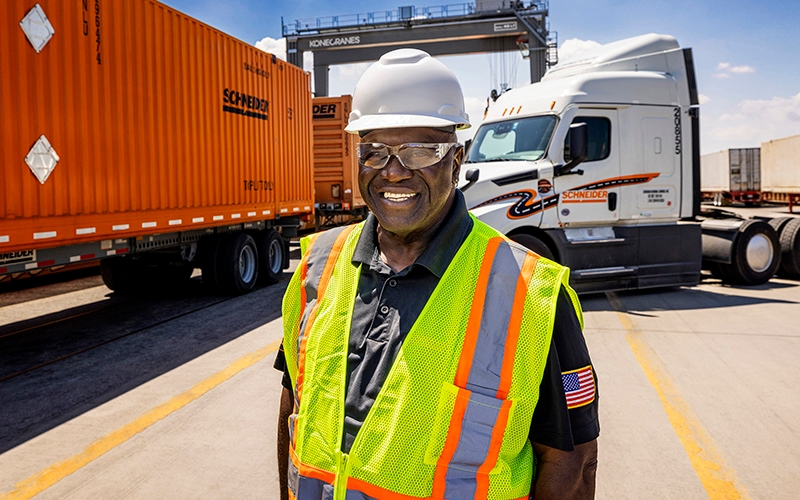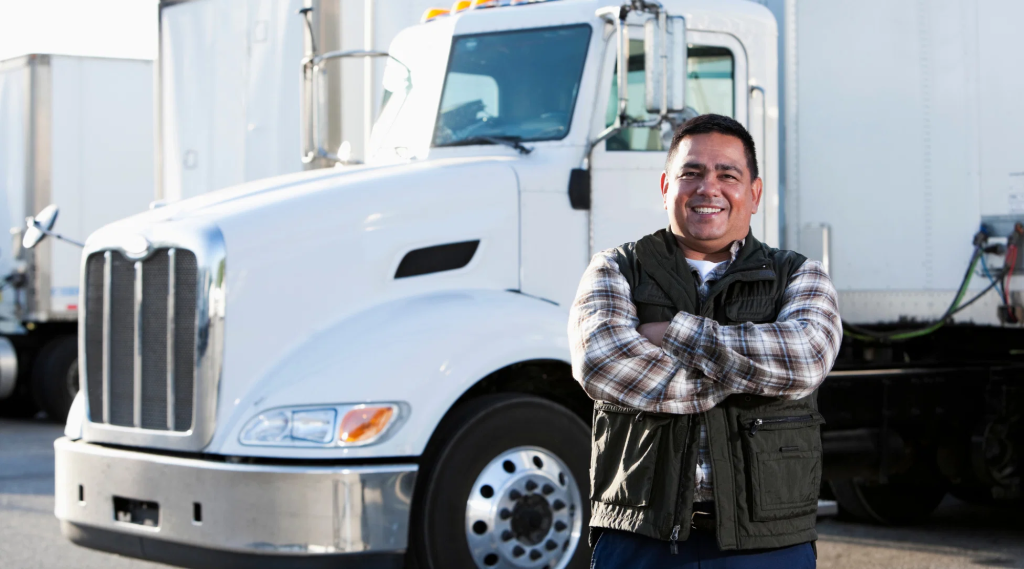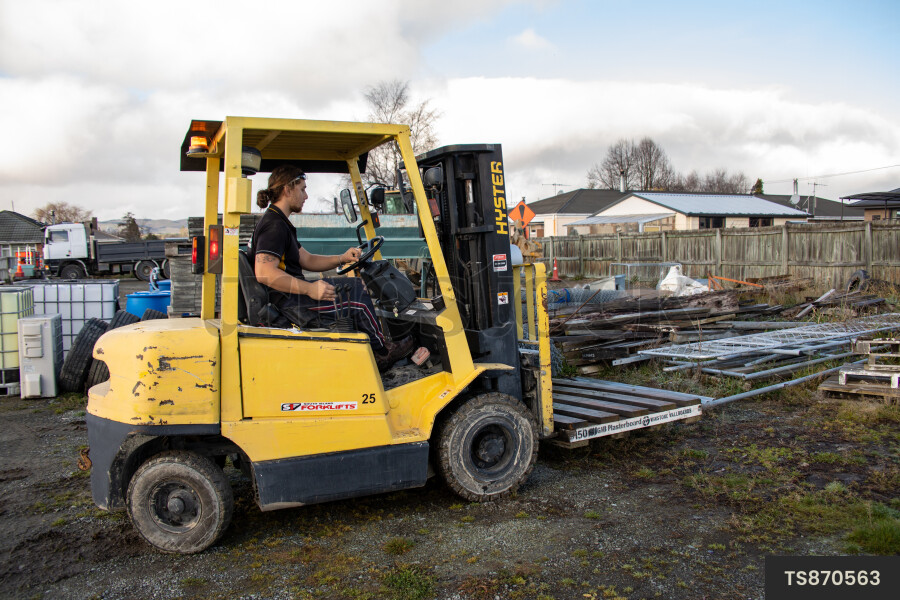When you look around your home — from the groceries in your fridge to the furniture in your living room — there’s one profession that made it all possible: truck drivers. Every year, millions of men and women crisscross the country’s highways, moving the goods that keep America running. Yet behind the wheel lies not just a job, but a stable, well-paying career with opportunities for growth, independence, and pride.
As e-commerce, manufacturing, and supply chain demands continue to grow, the U.S. faces a shortage of more than 80,000 truck drivers. This means more openings, better benefits, and long-term job security for those willing to hit the road.
This guide breaks down what it’s really like to be a truck driver, how to start your career, and the different stages of growth in this essential and evolving profession.

Why Truck Drivers Are the Backbone of the American Economy
Nearly 70% of all freight in the U.S. moves by truck. Without truck drivers, store shelves would be empty, factories would halt production, and hospitals would struggle to get critical supplies.
Truck driving is more than transportation — it’s the invisible engine of commerce. Whether you’re delivering fresh produce across states or transporting building materials for infrastructure projects, every delivery keeps the economy rolling.
The COVID-19 pandemic made one thing clear: truckers are essential workers. And now, with the retirement of many veteran drivers, new entrants have an incredible opportunity to join the industry and shape its future.
Types of Truck Driving Jobs
Not all trucking jobs are the same. Depending on your lifestyle and preferences, there are several paths:
- Local Drivers: Operate within a single city or region, returning home daily.
- Regional Drivers: Cover several states, usually returning home weekly.
- Over-the-Road (OTR) Drivers: Travel across the country, often for weeks at a time — ideal for those who love the open road.
- Specialized Drivers: Haul oversized loads, hazardous materials, or temperature-sensitive cargo for higher pay.
Each path offers unique schedules, pay rates, and experiences — allowing drivers to find the balance that suits their personal lives.
How to Become a Truck Driver: Step-by-Step
You don’t need a college degree to become a professional driver — just training, certification, and the right attitude. Here’s how to start:
- Meet Basic Requirements
You must be at least 21 years old to drive interstate (18 for intrastate). A clean driving record and good health are essential. - Get a Commercial Driver’s License (CDL)
The CDL is your ticket to professional driving. Training programs, usually 4–8 weeks long, teach vehicle operation, safety, and regulations. You can find CDL training at community colleges, trade schools, or company-sponsored programs. - Pass the Required Tests
You’ll need to complete a written exam, a skills test, and a driving test. Some endorsements — like HazMat (H) or Tanker (N) — require additional exams and can increase your job options and salary. - Gain Experience
Many companies hire new drivers as trainees or assistants. This is your opportunity to learn from seasoned mentors while earning income. - Continue Learning and Upgrading
As you gain miles under your belt, you can earn endorsements, move into specialized roles, or even become an owner-operator, running your own truck.
Career Growth: From Rookie to Owner-Operator
Truck driving offers clear stages of growth and increasing responsibility:
- Entry-Level Driver (0–2 years)
- Works under supervision, handles short or regional routes.
- Average Pay: $45,000–$60,000/year.
- Goal: Gain experience, maintain a safe driving record, and build confidence on the road.
- Experienced Driver (2–5 years)
- Operates independently, often qualifies for specialized routes or longer hauls.
- Average Pay: $65,000–$80,000/year.
- Goal: Obtain endorsements and develop strong time management and customer service skills.
- Owner-Operator or Fleet Driver (5+ years)
- Owns or leases a truck, manages routes, contracts, and expenses.
- Average Pay: $100,000–$150,000/year, depending on efficiency and contracts.
- Goal: Achieve financial independence and business ownership.
With experience, drivers can also move into dispatching, logistics management, or safety training, offering pathways off the road while staying within the industry.
What Makes a Great Truck Driver?
Successful truckers share a unique mix of technical skill and personal discipline. To thrive, you’ll need:
- Strong focus and patience: Long hours on the road demand attention and endurance.
- Mechanical understanding: Basic knowledge of truck systems helps in handling minor issues.
- Organization and responsibility: Managing routes, delivery times, and compliance paperwork.
- Self-motivation: Many drivers operate independently, requiring good time management and initiative.
Safety is the foundation of success — following regulations not only protects you but also builds trust with employers and clients.
Earnings and Lifestyle Considerations
According to the U.S. Bureau of Labor Statistics, the median annual wage for heavy and tractor-trailer truck drivers is around $53,000, with top drivers earning over $90,000.
Owner-operators, who manage their own trucks, can earn even more, though they also handle maintenance, fuel, and insurance costs.
While the job comes with challenges — long hours, time away from home, and strict schedules — many drivers appreciate the freedom, independence, and steady income the career provides. Some trucking companies now also offer improved home-time options, health benefits, and signing bonuses to attract new talent.

The Road Ahead: A Career Built on Movement
The trucking industry is undergoing transformation — from eco-friendly electric trucks to AI-assisted logistics that make driving safer and more efficient. But no matter how technology evolves, America will always need skilled drivers to move goods where automation can’t.
If you love the open road, value independence, and want a career where effort directly drives success, trucking could be your perfect path.
Start with a CDL, gain experience, and grow your way toward independence — one mile at a time. Because in trucking, every journey counts, and every driver keeps America moving forward. 🚚🇺🇸



